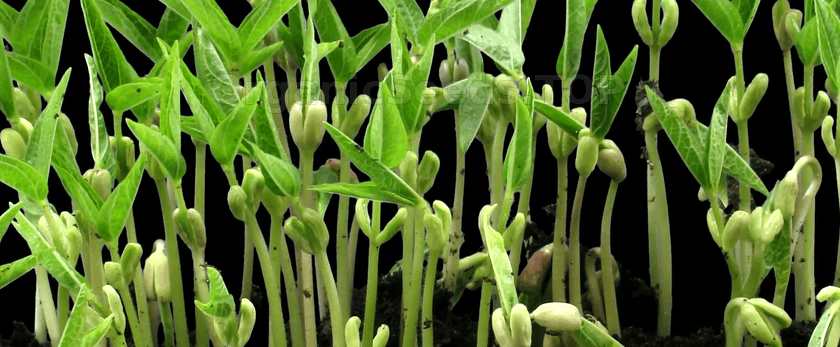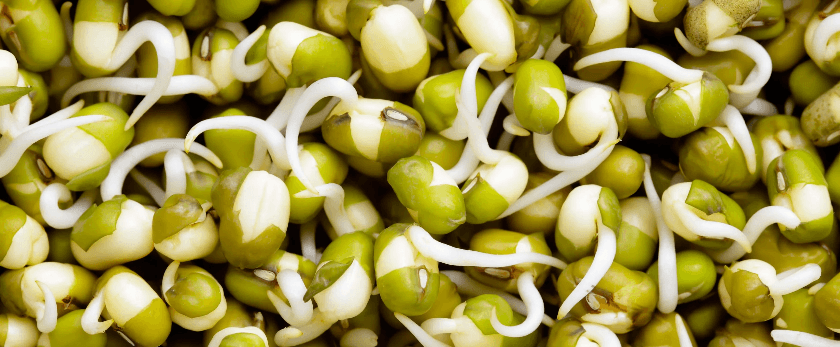Mung beans, also known as green gram or golden gram, are a type of legume that is widely consumed in many parts of the world. Not only are they a nutritious source of protein, fiber, and essential vitamins and minerals, but they are also incredibly easy to grow at home. In this article, we will discuss the steps to successfully grow mung beans in your own garden, as well as the best time to grow them and common problems you may encounter.
How to Care for Mung Beans
Watering
Mung beans require consistent moisture to grow, but they do not like to be waterlogged. It is important to keep the soil evenly moist, but not soggy. The best way to achieve this is by watering deeply once or twice a week, depending on the weather and soil conditions. Avoid overhead watering, as this can lead to fungal diseases. Instead, water at the base of the plants to keep the leaves dry.
Light
Mung beans thrive in full sun, but they can also tolerate partial shade. If you are growing them indoors, place them near a sunny window or use grow lights to provide them with enough light. If you are growing them outdoors, make sure they receive at least 6-8 hours of sunlight per day.
Soil
Mung beans prefer well-draining, loamy soil with a pH of 6.0-7.0. If your soil is heavy or clay-like, add some organic matter such as compost or aged manure to improve drainage and nutrient content. Avoid using chemical fertilizers, as they can harm beneficial microorganisms in the soil.
Fertilizer
Mung beans are nitrogen-fixing plants, which means they have the ability to convert atmospheric nitrogen into a form that can be used by plants. This makes them a great addition to your garden, as they can help improve the soil's fertility. However, if you notice that your plants are not growing well or have yellowing leaves, you can use a balanced organic fertilizer to give them a boost.
Pruning
Mung beans do not require much pruning, but you can pinch off the tips of the plants when they reach about 6 inches in height. This will encourage bushier growth and more flowers, which will lead to a higher yield of beans.

What is the Best Time to Grow Mung Beans?
Mung beans are warm-season plants and should be planted after the last frost date in your area. They prefer temperatures between 70-80°F (21-27°C) and will not tolerate frost. In most regions, this means planting them in late spring or early summer. However, if you live in a warmer climate, you can also plant them in the fall for a winter harvest.
Common Problems with Mung Beans
Pests
Mung beans are relatively pest-resistant, but they can still be affected by some common garden pests such as aphids, mites, and thrips. To prevent these pests, make sure to keep your garden clean and free of debris, and use natural pest control methods such as neem oil or insecticidal soap if necessary.
Diseases
Mung beans can also be susceptible to fungal diseases such as powdery mildew and root rot. To prevent these diseases, make sure to provide good air circulation and avoid overwatering. If you notice any signs of disease, remove the affected plants immediately to prevent it from spreading.
Nutrient Deficiencies
If your mung beans are not growing well or have yellowing leaves, it could be a sign of nutrient deficiencies. This can be easily remedied by adding organic matter or using a balanced organic fertilizer.
Conclusion
Growing mung beans is not only a fun and rewarding experience, but it is also a great way to contribute to a more sustainable future. By following the care tips mentioned in this article, you can easily grow your own mung beans at home and enjoy their delicious and nutritious harvest. Remember to also practice responsible disposal methods for a sustainable future, such as composting any plant waste and using eco-friendly gardening practices. Happy gardening!










